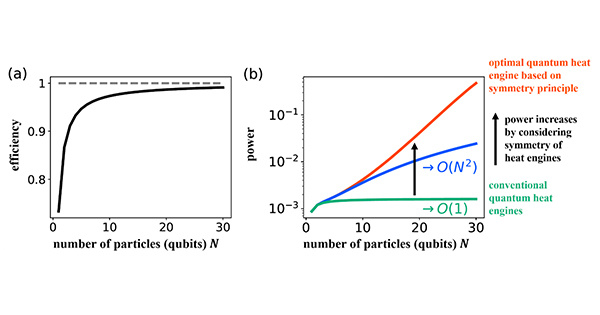Demonstrating a 100-Fold Increase in Efficiency through Production Process Informatics Using AI Robots
Key Points of the Announcement
- Developed a small-scale pilot line simulating the actual manufacturing process of fuel cells.
- Achieved over 10 times the experimental speed and over 10 times the exploration speed compared to conventional methods.
- Enabled the discovery of unprecedented process parameters using small sample volumes, and applicable for rapid design, operation, and management of production lines.

"ROPES for Coating & Drying"

Announcement Content
<Background of the Research>
Fuel cell vehicles (FCVs), heavy duty vehicles (HDVs) and stationary fuel cell generators are essential power generation devices for future hydrogen societies. The acceleration of production technology development, which is key to quality, cost, and delivery (QCD), is a pressing issue. One of the potential solutions is the utilization of automated experimentation and autonomous exploration systems, or laboratory automation; however, until now, there has been no system designed for powder film processes specifically intended for actual production.
<Research Details>
In this study, the research group led by Prof. Nagato at the University of Tokyo in collaboration with Kanazawa University, Kyushu University, and HORIBA, Ltd., addressed the challenges related to the establishing of high-quality coating technology in catalyst layer production as outlined in New Energy Development Organization (NEDO)'s FCV and HDV Fuel Cell Technology Development Roadmap (published in March 2023), as well as the exploration of materials and processes using Process Informatics (PI). The group focused on the coating and drying process within the autonomous experimentation and exploration system for fuel cell production technology, named "FC-ROPES." (note 1) Specifically, the group developed the "ROPES for Coating and Drying," which involves the application of catalyst ink using a die coater and the drying of the catalyst film with hot air (see Figure 2). The following three main functional requirements were established:
(i) Capable of being transported in a standard elevator,
(ii) Capable of handling small, low-volume samples,
(iii) Ensuring that the powder experiences the same physical phenomena as in actual production lines.
The group realized design solutions corresponding to each requirement as follows:
(i) Linking the process line and evaluation line,
(ii) Adoption of 1 cm × 1 cm single-wafer samples,
(iii) Scaling down the actual production line using a dispenser and multi-stage furnace.

Figure 2: "ROPES for Coating & Drying"
In demonstrating automated experiments, the group set a case with an average stabilization time of about 2 min. for the drying furnace, a drying time of about 6 min., an evaluation measurement time of about 1 min. for substrate preparation and storage, resulting in a total of 10 min. per cycle. This is equivalent to producing 100 samples and data in 17 hr. Moreover, in demonstrating autonomous exploration, the group discovered results for a two-step drying process involving skin layer formation and rearrangement using Bayesian optimization with only 24 trials out of approximately 500 parameter candidates.
<Future Prospects>
The "ROPES for Coating and Drying" developed in this study not only accelerates the previous research and development, as shown in Figure 3, but also contributes to a second acceleration that overcomes the valley of scale-up to the design, operation, and management of actual production lines, which are crucial for Quality, Cost, and Delivery (QCD). The group aim to leverage the results of this research, which enhances production technology development capabilities, not only for Japanese fuel cell system manufacturers (formerly AFC: All-Star FC, note 2) but also for material manufacturers and production equipment manufacturers. The group will work towards commercialization of contracted prototype measurement services and the ROPES system itself.
Moreover, while this time the group focused on the coating and drying process to demonstrate automated experiments and autonomous exploration, the group will also pursue research and development on automated experiments and autonomous exploration related to the upstream process of ink formulation, specifically 'mixing and dispersion ROPES' and the integrated production technology development demonstration in conjunction with “ROPES for Coating and Drying.” This will be addressed under the upcoming NEDO project, Research and Development for Strengthening Common Foundations for the Expansion of Hydrogen Utilization, as a “Process Informatics Platform for Production Technology”.
This outcome and the future project are aligned with the themes contributing to "Enhancing Research and Development Capabilities through DX Technology Development", as outlined in the NEDO Roadmap (to be published in February 2025), and will contribute to achieving performance targets for fuel cells for FCV and HDV by 2035.
 Figure 3: Utilization methods from ROPES production technology development sites to actual production lines
Figure 3: Utilization methods from ROPES production technology development sites to actual production lines
Promotional videos:[https://youtu.be/QySre6yKSSM]
(Published on March 21, 2025, 1 min.)
Presenters
The University of Tokyo
Graduate School of Engineering
Department of Mechanical Engineering
Prof. Keisuke Nagato
Kanazawa University
Faculty of Science and Engineering
Department of Mechanical Engineering
Prof. Takuya Tsujiguchi
Kyushu University
Graduate School of Engineering
Department of Chemical Engineering
Prof. Gen Inoue
HORIBA, Ltd.
Hiroshi Nakamura
Senior Corporate Officer (Executive Managing Officer) CTO
Glossary of Terms
(Note 1) FC-ROPES:
Named after “the ropes,” signifying the essence of guidance in exploring production processes collaboratively between robots and humans (Robotic Objective Process Exploration System).
(Note 2) All-Star FC (AFC):
OEM comprising four domestic fuel cell system manufacturers and the technical research consortium FC-Cubic.
You May Also Like
These Related Stories

Single-shot optical imaging with spectrum circuit bridging timescales in high-speed photography

Revealing the Effects of Symmetry on Thermodynamic Trade-off Relations: Toward elucidating the design principles of thermodynamic devices that achieve high-speed operation and low energetic costs


